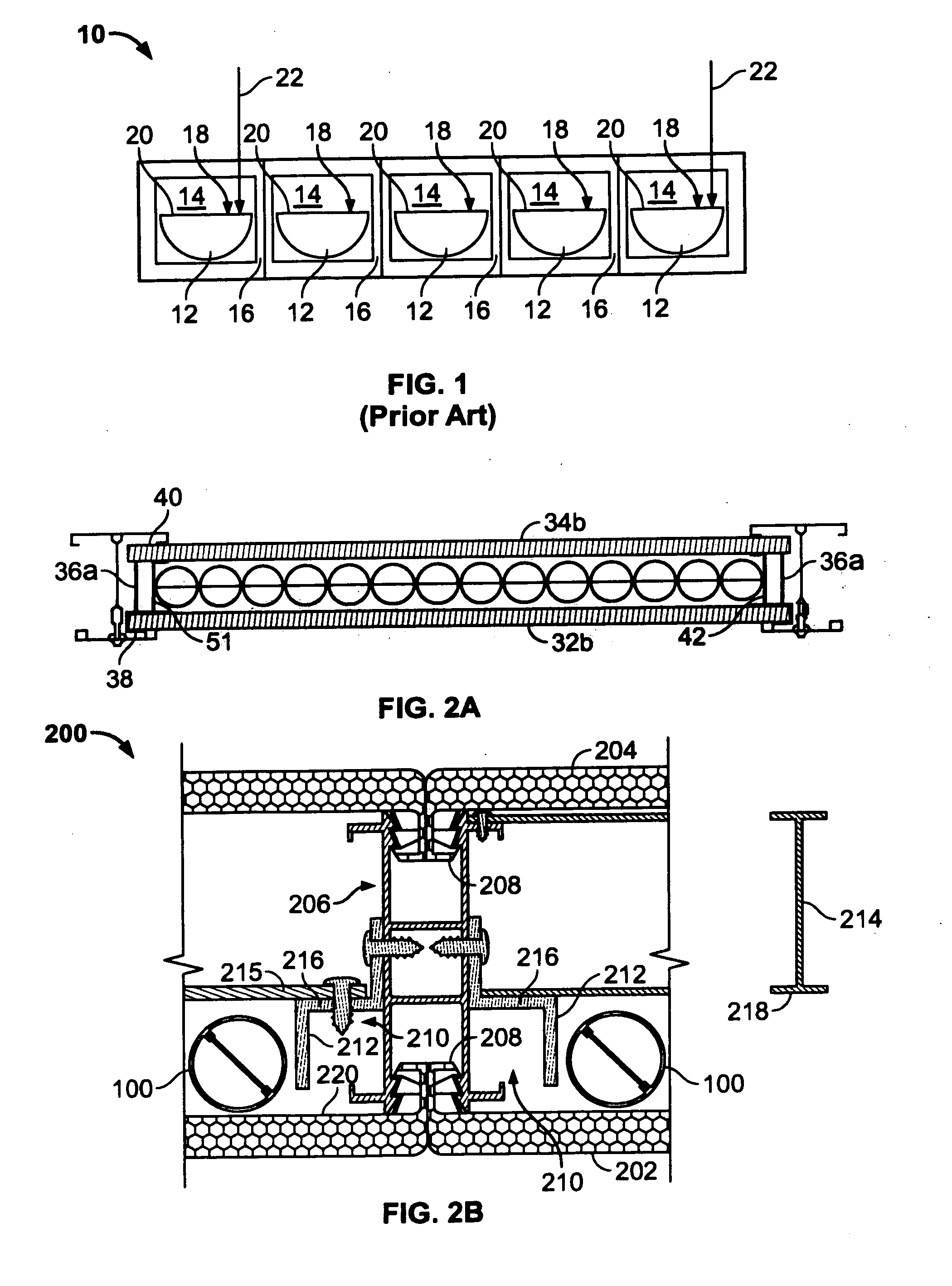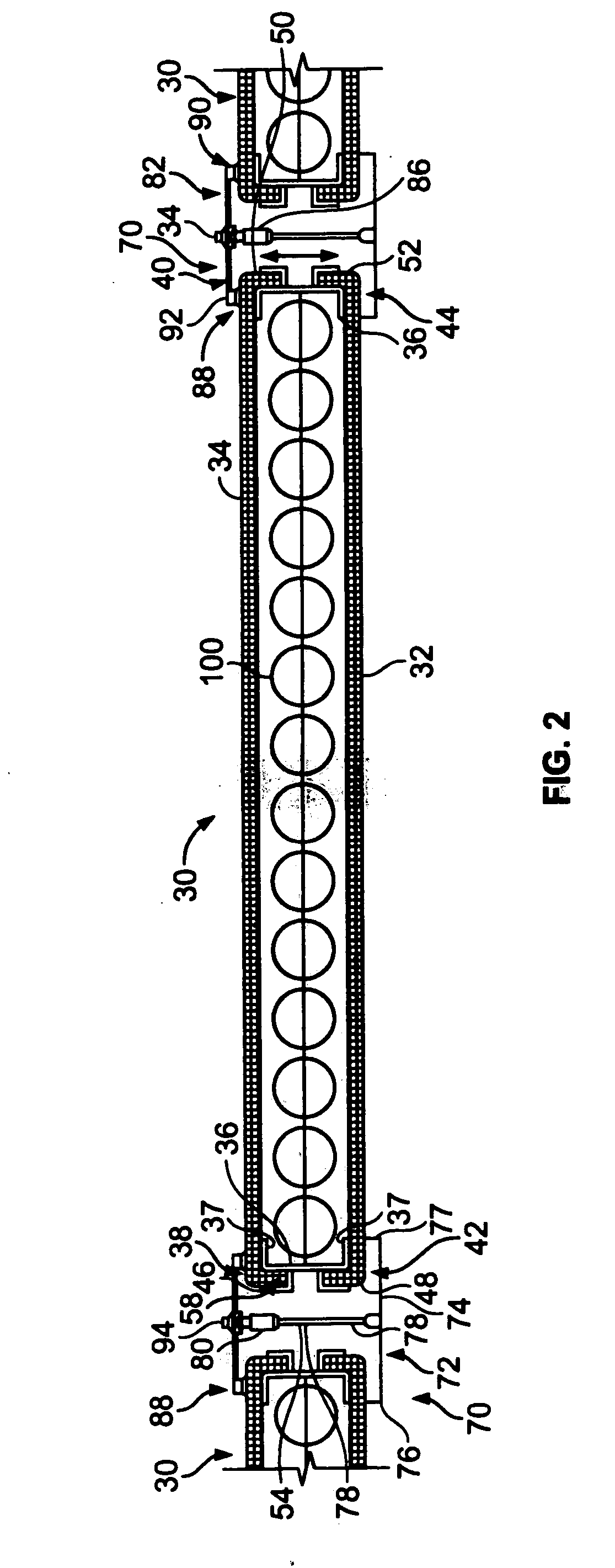Method and apparatus for selective solar control
a solar control and selective technology, applied in the direction of lighting and heating apparatus, door/window protective devices, using daylight, etc., can solve the problems of difficult or expensive construction and service, prior approaches to controlling the level of solar radiation passing through architectural structures, and difficult or expensive construction and maintenan
- Summary
- Abstract
- Description
- Claims
- Application Information
AI Technical Summary
Benefits of technology
Problems solved by technology
Method used
Image
Examples
Embodiment Construction
[0035] Turning first to FIG. 1, an elevational view of a transparent or translucent panel 10 in accordance with the teaching of prior U.S. Pat. No. 6,499,255 is shown. Panel 10 includes a series of half-cylinder louvers 12 rotatably mounted in a series of adjacent, segregated cells 14 separated by walls 16. Louvers 18 each have an opaque top surface 20. Thus, in the illustrated embodiment where the louvers are in the fully closed position, light rays 22 strike opaque surfaces 20, which block light transmission through the opaque louvers and the panel. The opaque top surface blocks the light / solar spectral radiation and therefore absorbs the solar radiation rather then reflecting or deflecting it. Additionally a portion of the absorbed solar radiation is emitted as heat into the interior space below the panel. The lack of selective solar reflection or deflection properties as well as the inability to selectively transmit or block the solar spectrum creates undesirable glare and ineff...
PUM
| Property | Measurement | Unit |
|---|---|---|
| Angle | aaaaa | aaaaa |
| Diameter | aaaaa | aaaaa |
| Transparency | aaaaa | aaaaa |
Abstract
Description
Claims
Application Information
 Login to View More
Login to View More - R&D
- Intellectual Property
- Life Sciences
- Materials
- Tech Scout
- Unparalleled Data Quality
- Higher Quality Content
- 60% Fewer Hallucinations
Browse by: Latest US Patents, China's latest patents, Technical Efficacy Thesaurus, Application Domain, Technology Topic, Popular Technical Reports.
© 2025 PatSnap. All rights reserved.Legal|Privacy policy|Modern Slavery Act Transparency Statement|Sitemap|About US| Contact US: help@patsnap.com



